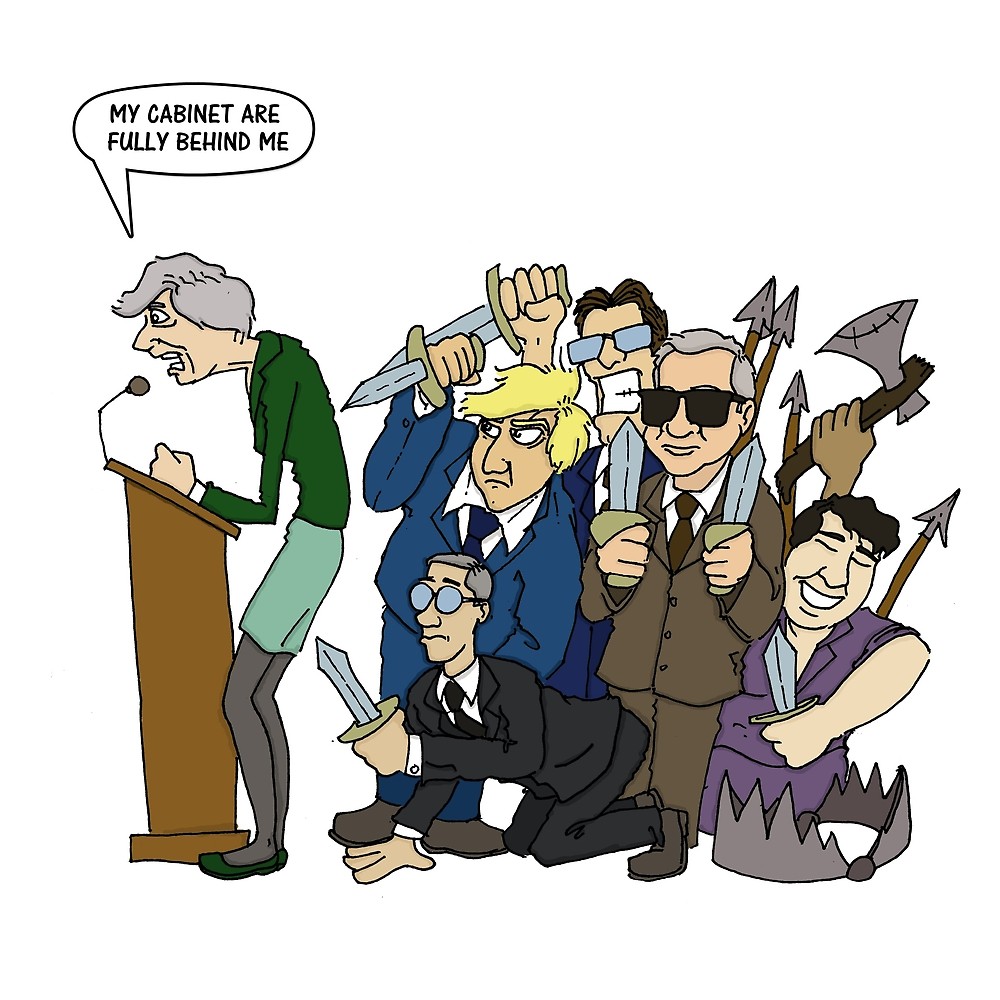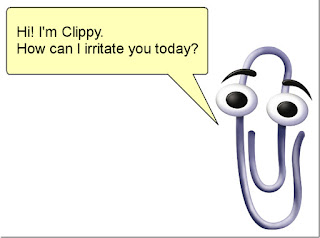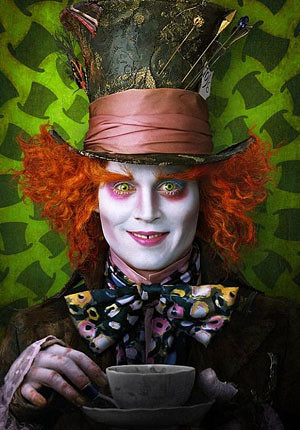The last sound - Huh?
Is the world going to end with a bang - or with a whimper? What about that bit in Revelations - The last trump?
The one thing we can assume is that the world will one day 'end' - even if that means waiting around for a few billion years until the sun expands to a red giant and swallows up the earth.
But what do people mean when they speak of 'the end of the world'? In fact they don't mean 'The end of the world.' They usually mean 'The end of our civilization,' or even, 'The end of humanity.'
Let's take a look at some doomsday scenarios.
But what do people mean when they speak of 'the end of the world'? In fact they don't mean 'The end of the world.' They usually mean 'The end of our civilization,' or even, 'The end of humanity.'
Let's take a look at some doomsday scenarios.
- Impact events -

The impact of a big enough asteroid or comet could create giant tsunamis, global fires, and cause a global winter from the dust it puts in the atmosphere. There is strong evidence that such an impact has occurred several times in the history of the Earth. It is highly probable that such an event was the cause of the extinction of the dinosaurs. The chances are that we would receive little or no warning of such an event. (Sorry Armageddon fans - it just wouldn't be noticed in time for Bruce Willis to go and blow it up). Astronomers have calculated, based on craters on the Moon, that during the last 600 million years the Earth has probably been struck by about 60 objects, 5 kilometers or more across. The smallest of these would release the equivalent of 10 million megatons of TNT, leaving a crater 95 kilometers across. Thats 200,000 times as powerful as the largest atom bomb ever detonated. it's also possible - but incredibly unlikely - that a major collision somewhere in our solar system could fill our system with enough debris to make life difficult on any body in the solar system. Definitely a 'Bang' scenario. - Interstellar wanderers - In the last few years we have also discovered interstellar wanderers which range in size and mass from asteroids to black holes. Some of these wouldn't even have to hit the earth to cause disaster. A black hole passing through or even near our solar system could dramatically affect the orbits of the planets and sending the earth out of the Goldilocks zone. Probably a whimper event with humanity being roasted or freezing.
 Volcanism - Throughout the history of the Earth there have been huge 'super volcano' volcanic eruptions which involve the outflow of millions of cubic kilometres of ejecta in a short period of time. By comparison, the biggest volcanic explosions recorded by history, are tiny. The dust and gases would poison the atmosphere and oceans and bring on a global winter in a way that may cause extinctions. This cause has been proposed for the End Cretaceous, End Permian, End Triassic, and End Jurassic extinctions. There are super-volcanoes at Yellowstone in the USA, Indonesia and New Zealand. Such an explosion may wipe out much of life on Earth but would not affect the Moon or other planets greatly. Definitely a 'Bang' scenario.
Volcanism - Throughout the history of the Earth there have been huge 'super volcano' volcanic eruptions which involve the outflow of millions of cubic kilometres of ejecta in a short period of time. By comparison, the biggest volcanic explosions recorded by history, are tiny. The dust and gases would poison the atmosphere and oceans and bring on a global winter in a way that may cause extinctions. This cause has been proposed for the End Cretaceous, End Permian, End Triassic, and End Jurassic extinctions. There are super-volcanoes at Yellowstone in the USA, Indonesia and New Zealand. Such an explosion may wipe out much of life on Earth but would not affect the Moon or other planets greatly. Definitely a 'Bang' scenario. Nuclear war -Apart from the destruction and radiation, a global nuclear war could throw sufficient dust into the atmosphere to cause a nuclear winter which would prevent crops growing for up to two years and bring about mass starvation. Definitely a 'Bang' scenario.
Nuclear war -Apart from the destruction and radiation, a global nuclear war could throw sufficient dust into the atmosphere to cause a nuclear winter which would prevent crops growing for up to two years and bring about mass starvation. Definitely a 'Bang' scenario.- Climate change - Rapid changes of climate may be capable of stressing the environment to the point of causing mass extinction. Such a scenario is suggested in the film 'The day after tomorrow'.
- Gamma ray burst - A nearby gamma ray burst from a supernova within 6000 light years distance could cause enough radiation on the surface of the Earth to kill most of the larger animals
- living there and destroy the ozone layer in the process. Insects would probably survive. Astronomers tell us approximately 1 gamma ray burst can be expected every 540 million years. This has been suggested as an explanation for the End Ordovician extinction event. A whimper scenario with a spectacular display in the sky.
- A new disease. It's possible that a new disease could develop, either by natural means or by genetic manipulation.
Natural diseases such as plague, flu or COVID-19 can devistate but eventually we overcome these and although they can greatly inconvenience us, humanity survives. There have been several natural pandemics in the past but none of them came close to wiping out humanity. They did have a dramatic effect on civilization however. The black death killed from 20 to 80% of the population of towns, 33% overall of the worlds population. Labour became in short supply and it caused the end of the feudal system.
Non-natural diseases could be created using genetic engineering to create a disease against which we have no defence. Humanity, and the rest of the animal kingdom would have little or no resistance to it and only totally isolated communities would survive. It would take a true insane monster to deliberately produce such a disease, the monster/s putting themselves at risk. More likely such a disease could be produced by accident and released unintentionally. A whimper scenario. - Simulation shutdown.
I'm sure you've seen the 'Matrix' films. Science fiction huh? Well maybe not! It's possible that we are living in a simulation. Consider the way in which computers have advanced. It won't be too long before they advance to the point where it would be possible to create a society in simulation (Sims 3 game?). Given a sufficiently advanced technology it would be possible to simulate an entire world in incredible complexity. Think that's unlikely? We could in fact be in such a simulation and not know it. If that were the case then it would be possible for the simulation to be shut down - or reconfigured as in 'Jokester' by Isaac Asimov. In that story scientists use a computer to analyse the origin of humour. The story ends with humour being removed and:
'...they remained there, staring, feeling the world shrink down to the dimensions of an experimental rat cage - with the maze removed and something, something about to be put in its place.'
There's not a lot we could do about it. One second we are 'alive' and the next - off. No sound at all. - Nanotechnology. This is in effect a man made equivalent to a biological plague. Whilst nanotechnology (the creation of microscopic machines) could have enormous potential for good it could also cause a 'gray death' where the nano-machines convert the entire mass of the Earth to more machines. One of the earliest suggestions of this was featured in the remake of 'The Day the Earth Stood Still' where a robot broke up into nanotechnology bugs which proceeded to eat all traces of our civilization. An unlikely scenario? You would only need one of these nanobots to be created to start the process. Another 'whimper' scenario first proposed by Eric Drexler, in his book 'Engines of Creation
' and was followed by Michael Crichton's book 'Prey
'.
- Magnetic pole reversal. Geological evidence shows us that the Earth's magnetic poles reverse every 200,000 years on average. The last one was 700,000 years ago so we would seem long overdue for this. When it happens it will have a dramatic effect on the Earth. The main cause for concern is that the Earth's magnetic field which creates the protective Van Allen belts will disappear and Earth will be exposed to very high levels of solar radiation. Some scientists think the magnetic field is already weakening. This would be a 'whimper' event - maybe a good time to invest in sun-screen manufacturer shares.
- Runaway Greenhouse.
In this 'global warming' scenario, the level of greenhouse gases in the atmosphere reaches a point where more heat is trapped in the atmosphere than can be radiated back out into space. The result is an unstoppable temperature rise over a period of years or tens of years, which would be sufficient to wipe out most forms of life very quickly. Venus, where temperatures at the surface are high enough to melt lead, is affected by this phenomenon. It's possible that the release of carbon dioxide and methane into the Earth's atmosphere could trigger the release of trapped methane stored on the oceans floors and in permafrost causing this effect. The amount of greenhouse gases in the atmosphere has been much higher in the past however so this is very uncertain. Water vapour is a greenhouse gas - it has four times the effect of carbon dioxide and is far more plentiful in the atmosphere (1-4 % water vapour; 0.04% carbon dioxide). It may be that the Earth's oceans will absorb whatever we release. Despite all the research and climate models created there is still a great deal of uncertainty about climate change. The two things we are certain about are:
- The climate is changing.
- Doing things which make matters worse are bad ideas
- Superseded by technology. Eventually we will create an artificial intelligence which could replace us as the dominant intelligence on this planet. Something like the scenario on which the Terminator movies are based. The war between it and us would be a bang event. Of course we could carefully program such intelligences with something like the laws of robotics suggested by Isaac Asimov and it could go too far the other way with such intelligences stifling our future development by being over protective - a whimper event. Recent developments in computer technology make it possible for computers to model the human brain. You should also keep an eye on memristor technology which promises to make faster, more capable, analogue computers in a smaller space. It should start to change computers eventually.
- Global Snowball. The very reverse of the runaway greenhouse. Dust from volcanoes, a decrease in solar output or impact events could cause a winter which freezes the oceans. This increases the amount of heat reflected and the temperature in summer is never enough to melt the ice. A very chilly 'whimper' event where we would desperately try to induce a greenhouse effect to solve it!
- Solar old age. As the Sun uses up all its hydrogen fuel, helium at it's core will start nuclear fusion causing an increase in solar temperature. The result is a gradual increase in size. This process will continue until, around 5 billion years from now, the Sun will be 100 million miles across - encompassing the entire orbit of the Earth. Life will have been extinguished on our planet long before that. The seas will boil off and all gas will be blown away from the Earth by solar storms. It is estimated that 1 billion years from now, the temperature of the Earth will be similar to present-day Venus making life untenable. Given a billion years this will be a long drawn out 'whimper' where our descendants (if we have any by then) will probably bear little resemblance to us today.
- Alien invasion. Could it be the might be an alien invasion on the lines of 'Independence Day', 'Battlefield Earth' or 'War of the Worlds'. If we were to face a hostile advanced intelligence would we really have any chance against them? Probably a 'Bang' event. Personally it is my belief that any civilization advanced enough to cross interstellar space would also have advanced socially and be less warlike than humans.
- Uploads. This is an alternative to developing artificial intelligence which supersedes us. It may be that we will develop the ability to transfer our consciousness to a computer by 'uploading our brains'. If that were the case then many would choose this as an alternative to death. Once this is the case human intelligence can evolve at an ever increasing rate as processors become more powerful, faster and storage capacities increase. The upload would be able to redesign itself and eventually uploads would swamp the 'normal' humans. The question here is whether an upload could count as being human? Humanity as we know it today would wither away. A whimper event.
- Running out of resources. Imagine what the earth would be like if we were no longer able to depend on it for raw materials.
- What if we run out of oil and natural gas. These vital materials supply much of our energy and the chemicals from which we make plastics and other things. These fossil fuels are becoming ever harder to find and eventually it will cost more to extract them than they are worth.
- What if we run out of metal ores? Some are abundant now but will this be true in the future if we continue to use them at an ever increasing rate?
- There are some rare materials which are essential for our electronic circuitry. What happens if we can't find new supplies?
- Extremism. This has always existed but today we are far more aware of it. it is too easy to close our eyes to reality and blame others for the failure of society. We blame other political parties, religions, people from another country, guns, 'big pharma', the rich, the poor. Conspiracy theories abound. We do not check items that appeal to our 'feelings' and that re-enforces our mistaken beliefs. Throughout history we have followed despots waving flags in patriotic fervour and blaming 'them' - whoever they are, for the ills of society. It's getting worse! Extremism is on the rise and has led already to horrendous incidents such as 9/11, genocide and civil war. Will there come a point when law and order breaks down completely and governments fall?
- Disparity between rich and poor. The richest 1% already own more than the remaining 99%.
- Solar flare
- Divine intervention. Most religions suggest that there will come a time when Man's purpose on Earth is achieved and God/the Gods call an end where the good people are separated from the evil ones.
- In the Christian Biblical account of the Last Judgment, the End of the World is preceded by War, Conquest, Pestilence and Famine, the so-called "Four Horsemen of the Apocalypse" and the blowing of seven trumpets. It's been expected since about AD 60.
- Islam nails the Apocalypse down to a formula in the Qur'an, thanks to prophecies by Muhammad. It's the apocalypse when 'x' amount of famine is multiplied by 'y' amount of drought, divided by the square root of 'z' infidels. (It's any day now, in case you were wondering.) Only Allah will know the exact date however but we can watch out for: Fire, Floods, Pestilence, Wars, Rumours of wars, Strange lights in the skies, The Second Coming, A virgin birth, The birth of the Antichrist, A number of false Christs and/or Messiahs, Cloning, Identifying marks being placed on the population at large (embedded RFID chip anyone?), Famine, Earthquakes and The Rapture where true believers will be whisked away to heaven.
- The Hindus believe that the universe is running a cycle which will culminate in a Cosmic Reboot at the end of the Fourth Age (which we are currently enjoying). Currently the world exists in the Age of Kali, the god of destruction. Kali rules over an age of strife, anger and war on earth, which will end with the destruction of everything to pave the way for a new world. Unlike the Christians and Muslims, the Hindus don't believe this event is coming any time soon.
- Buddhists believe that the seeds of the ending of the universe are present in the creation of the universe. (Quite in tune with cosmology). The "Buddha of our time", Shakyamuni Buddha, did not say he was the first Buddha. He did speak of the end of illusion which would change how we see the universe. In Tibetan Buddhism, it is predicted that the physical universe will end with earth and air being subsumed into water and fire, and all will dissolve into space. Within this cosmology, the end is predicted to be a long way off in the future as there will be 1,000 Buddhas who appear in this fortunate kalpa (great eon). < li>The Mayans too believed in a cyclic world. Their highly detailed and accurate calendar is a list of days in the Fourth Sun, the current cycle of the world. The calendar simply ended on Dec. 21, 2012 at 11:12 am UT (the winter solstice), and the Mayans did not offer a calendar addendum to specify anything much happening after that. No doubt, had they still been around, they would have produced a new calendar for the next cycle. Since it's now 2014, I think we can safely discount a Mayan doomsday.
- The Jews believe they are God's chosen people and that the Messiah will arrive in the future and gather them into Israel. There will be a general resurrection of the (Jewish?) dead, and the Jerusalem Temple destroyed in 70 CE will be rebuilt. I'm not sure on what Jews believe will happen then or to the rest of the world. Perhaps someone more knowledgeable could enlighten me?
- Zoroastrians believe in a single supreme god Ahura Mazda and an evil spirit Angra Mainyu who opposes. At the end of time there will be a cosmic conflict involving the entire universe. Humanity will be required to choose which to follow. Evil, and the Spirit of Evil, will be completely destroyed at the end of time. Eventually, everything will be purified. Even the occupants of hell will be released.
So lets see - that's 4 'bangs', ten 'whimpers', a 'last trump' and an 'off'. It seems the whimpers have it.
Further reading :










 Jeremy Corbyn refused nine times to be drawn on his position on Brexit and was much taunted by it in the election debate. This is how I think he should resolve this:
Jeremy Corbyn refused nine times to be drawn on his position on Brexit and was much taunted by it in the election debate. This is how I think he should resolve this:



















